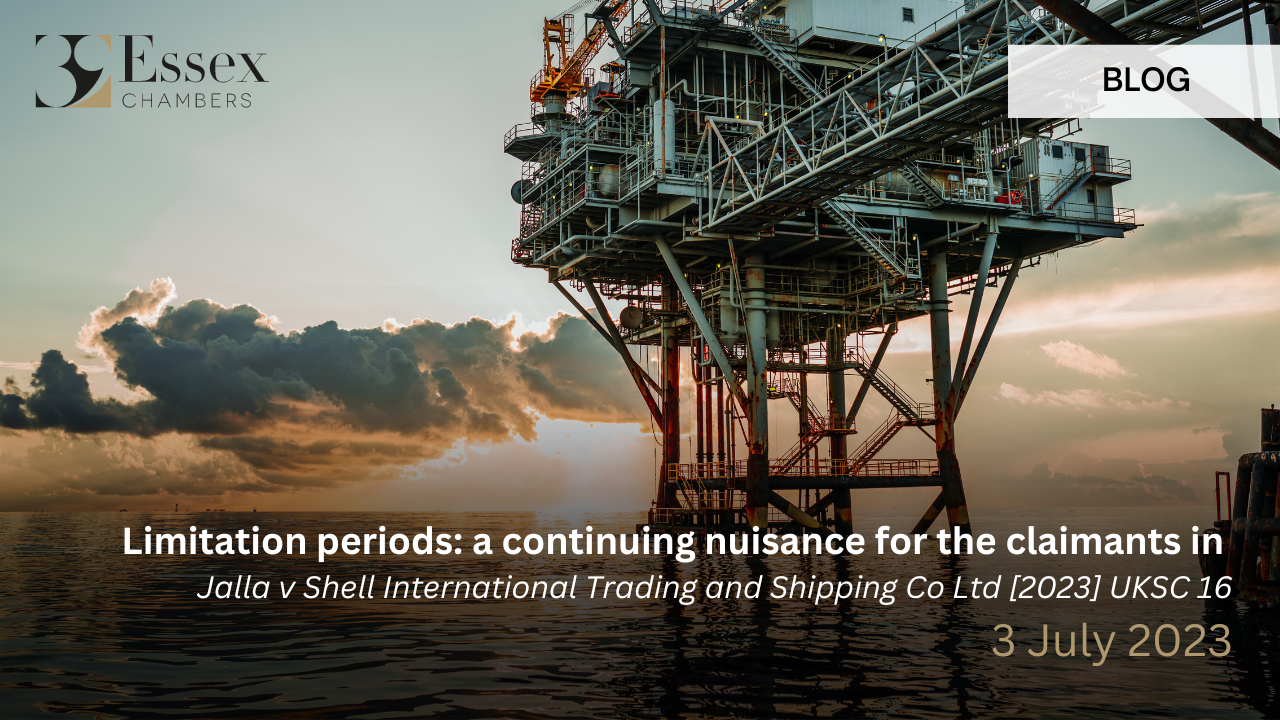Limitation periods: a continuing nuisance for the claimants in Jalla v Shell International Trading and Shipping Co Ltd [2023] UKSC 16
 Introduction
Introduction
In Jalla v Shell International Trading and Shipping Co Ltd the Supreme Court considered whether an oil spill could constitute a continuing nuisance. If it did, Shell would have no limitation defence against the claim brought by the appellants (Mr Jalla and others) which alleged that oil from a spill in December 2011 had contaminated their land. While an oil spill case, the principles set out by the Supreme Court have far reaching consequences for anyone involved in the manufacturing or transport of noxious products, and for those involved in construction works on contaminated land.
Decision in the High Court and Court of Appeal
A continuing nuisance matters for limitation because time begins to run afresh on each day that the nuisance continues. At first instance and in the Court of Appeal the appellants’ argument that an oil spill fell into this category of case was rejected. In essence, this was because there was a single event which constituted the oil spill rather than repetition of acts and omissions which gave rise to the original cause of action. This was not comparable to cases where there was the intrusion of tree roots causing a nuisance because, in that case, those living roots emanating from the defendant’s land continued the harmful state of affairs . There must be a distinction drawn between the continuing nuisance and the continuing harm.
Decision in the Supreme Court
In the judgment of Lord Burrows the Supreme Court unanimously rejected the appeal. While there was no prior English law case which had determined this issue, to allow the appeal would be a significant extension of the current law and undermine limitation. As a starting point, a line must be drawn between the continuing problem (in this case the oil being present on the appellants’ land) and the continuing private nuisance. The former does not denote the latter.
In principle, a continuing nuisance arises where, outside of the claimant’s land, there is a repeated activity or ongoing state of affairs caused or allowed by the defendant which results in continuing undue interference with the use and enjoyment of the claimant’s land. Explained in that way, continuing nuisances are common and claims in respect of them often seek an injunction. It should be noted that, with requisite knowledge and failure to act reasonably, a defendant can culpably continue a nuisance which they have not created.
On the facts, the appellants’ submissions amounted to the conversion of the tort of private nuisance to the tort of failure to restore land. That is not the nature of the tort. Here one event had occurred: the oil spill. There was no repeated activity by Shell nor an ongoing state of affairs for which Shell was responsible that was causing continuing undue interference. The cause of action here accrued when the appellants’ land was affected by the oil; it did not continue for as long as the oil remained. There was no ongoing state of affairs outside the claimant’s land causing the harm, and thus no continuing nuisance.
While this was sufficient to dispose of the appeal, Lord Burrows also noted that it was not a necessary requirement for a continuing nuisance that the defendant have control over the continuation. Indeed, the creator of a nuisance can be sued in the tort of private nuisance irrespective of whether that person still has control. This is not an additional reason to refuse the appeal.
Comment
This case is an important tool in the toolbox of defendants that operate businesses that (intentionally or inadvertently) emit noxious products, and those involved in construction works on contaminated land. Practitioners should take care to draw the narrow distinction between continuing harm on one hand and continuing nuisance on the other; that distinction could result in a knockout blow defending a claim. In drawing that distinction, practitioners may be assisted (at least initially) by considering whether an injunction could be claimed against any matter outside of the claimant’s own land. If that is not so, this is a good initial indicator that the nuisance may not be a continuing one.
SAVE THE DATE: 39 Essex Chambers All Day Construction Conference will be happening on 12 Octobers 2023 - with more details to come.

